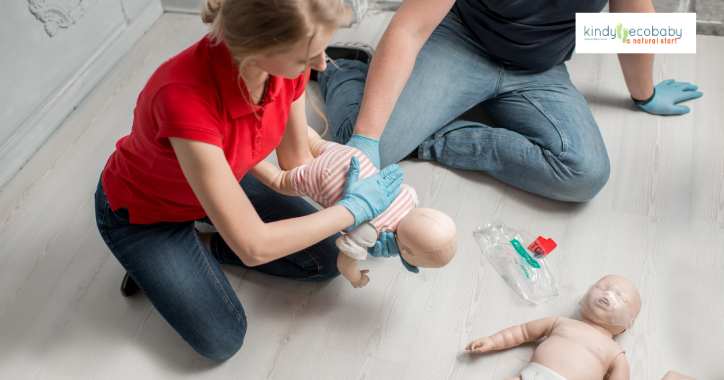Keeping Your Home Safe: Smart Ways to Minimize Choking Hazards
By: Karen J On:10 December 2023

Prioritizing safety measures and staying vigilant can significantly reduce the risk of choking hazards Here are some practical measures to ensure your home remains a safe haven for your child
Creating a safe environment for your little one involves being proactive in minimizing choking hazards around the house.
Here are some practical measures to ensure your home remains a safe haven for your child:
1. Know the Choking Hazards
Identify: Familiarize yourself with common choking hazards for young children. Small toys, coins, buttons, balloons, and food items like grapes or nuts pose significant risks.
2. Childproof Your Home
Secure Items: Use childproof locks on cabinets and drawers containing hazardous items. Keep small objects out of reach and ensure that larger items are stable and cannot tip over.
3. Monitor Small Items
Store Safely: Store small items like batteries, magnets, or tiny toys in locked or latched containers, ensuring they're inaccessible to curious hands.
4. Be Mindful of Toy Selection
Size Matters: Choose age-appropriate toys that don't have small detachable parts that could become choking hazards. Regularly inspect toys for any wear or damage.
5. Supervision Is Key
Constant Supervision: Always supervise young children during meal times and play. Encourage seated eating and discourage running or playing while eating.
6. Teach Safe Eating Habits
Food Preparation: Cut food into small, manageable pieces and avoid offering large chunks of food that could potentially block the airway.
7. First Aid Knowledge
Learn CPR: Being prepared with first aid knowledge, including CPR for infants and children, can be crucial in emergency situations.
8. Regular Home Inspections
Routine Checks: Perform routine checks around your home, ensuring potential hazards are identified and mitigated promptly.
9. Educate Caregivers
Inform Others: Ensure babysitters, family members, and caregivers are aware of choking hazards and safety measures around the house.
10. Emergency Contact Information
Readiness: Keep emergency numbers and information handy, including your pediatrician's contact details and the local emergency services number.
Prioritizing safety measures and staying vigilant can significantly reduce the risk of choking hazards in your home, creating a secure environment for your child to explore and thrive.





